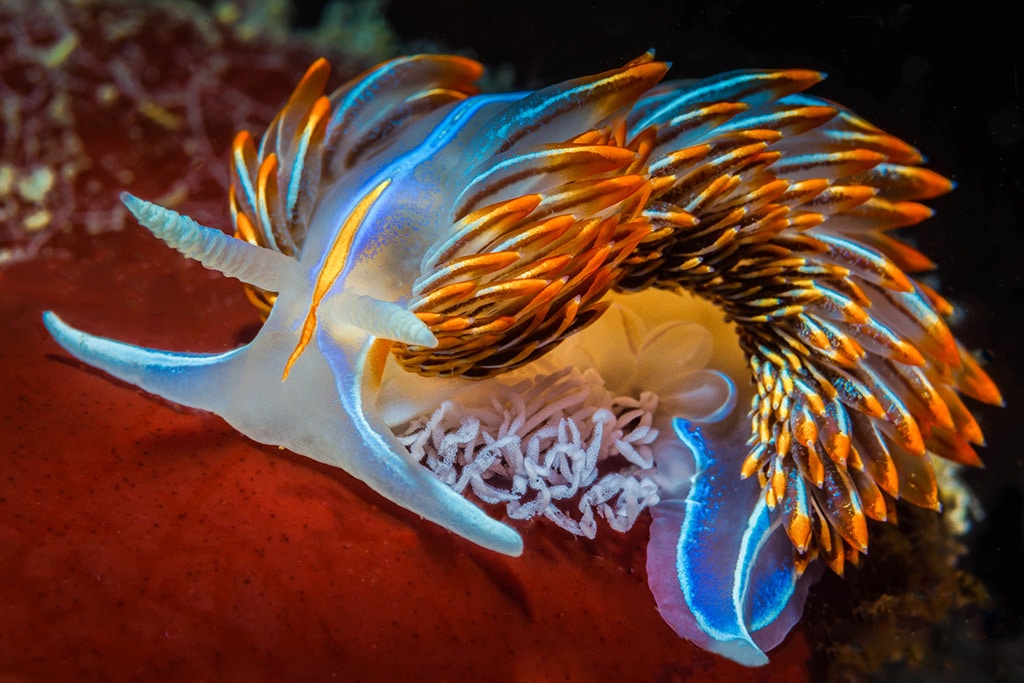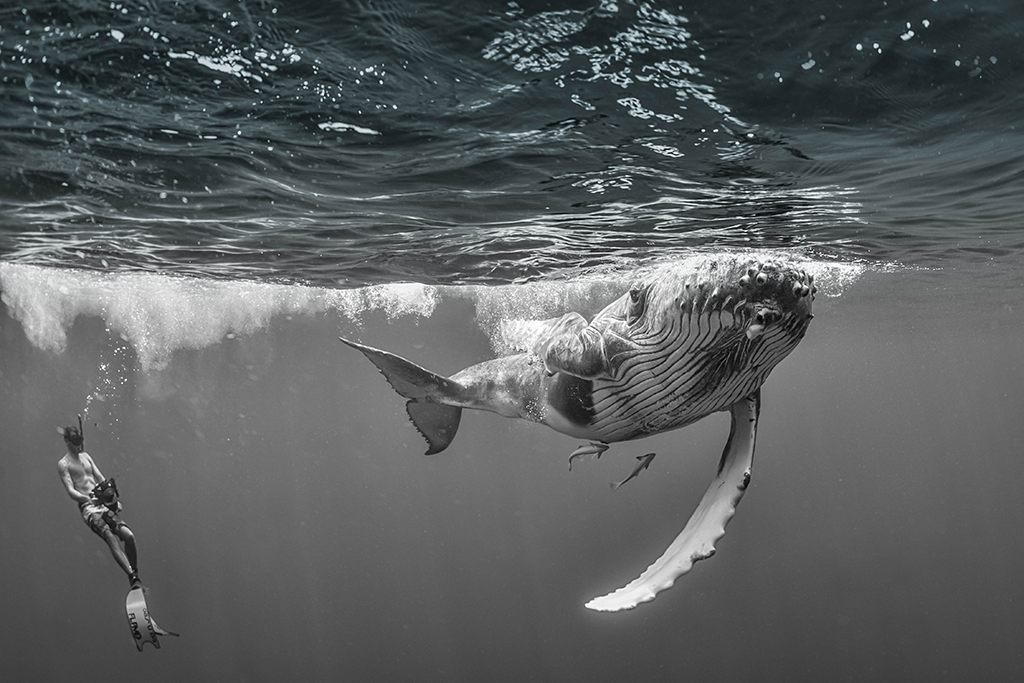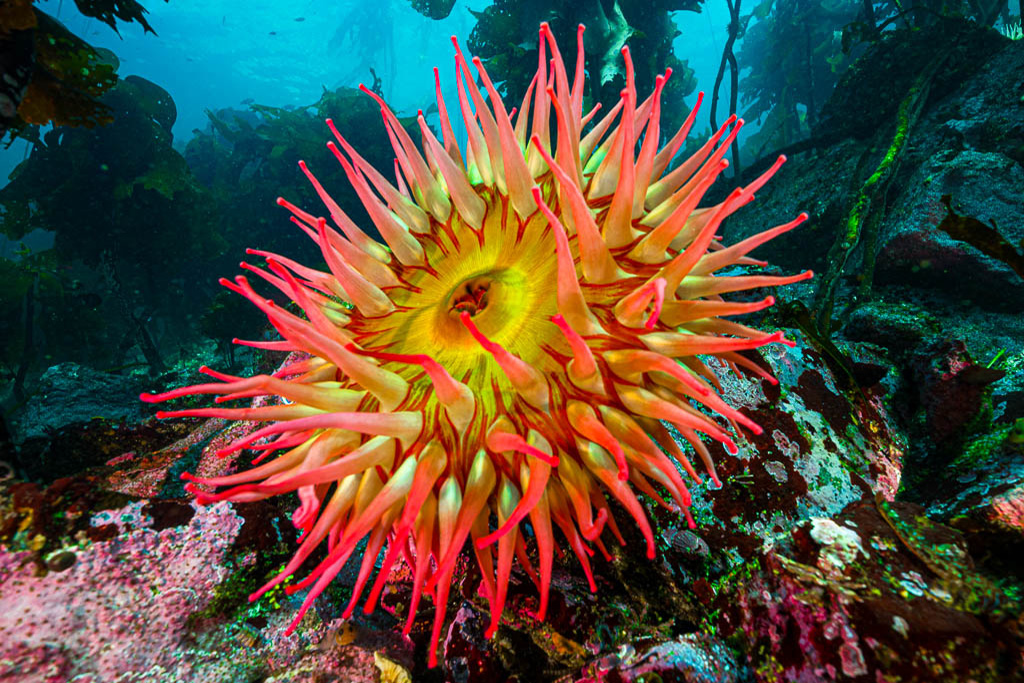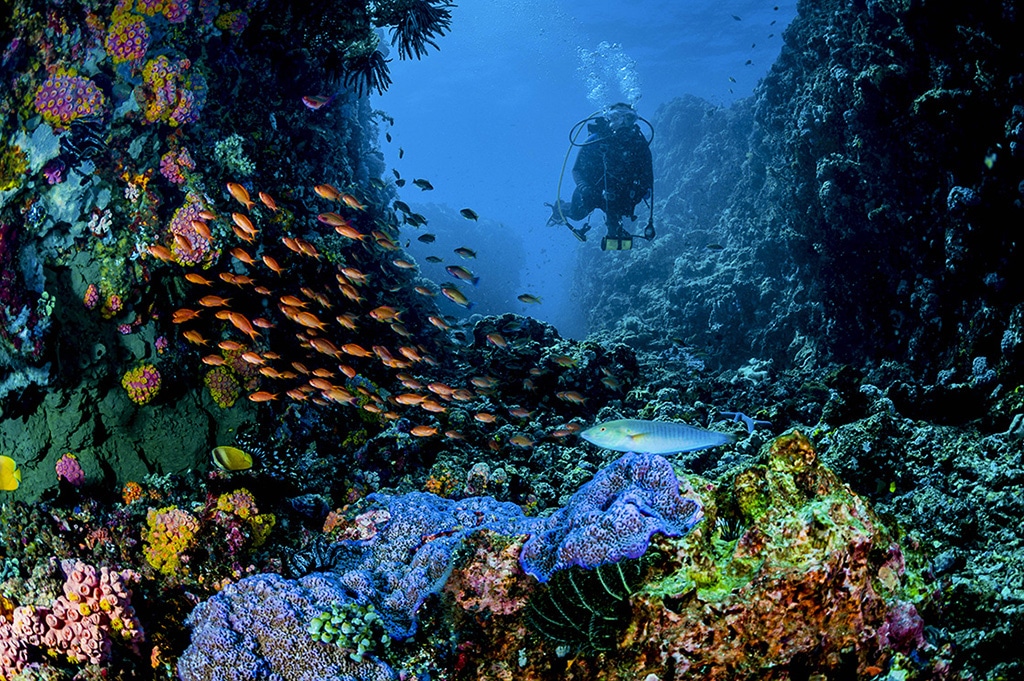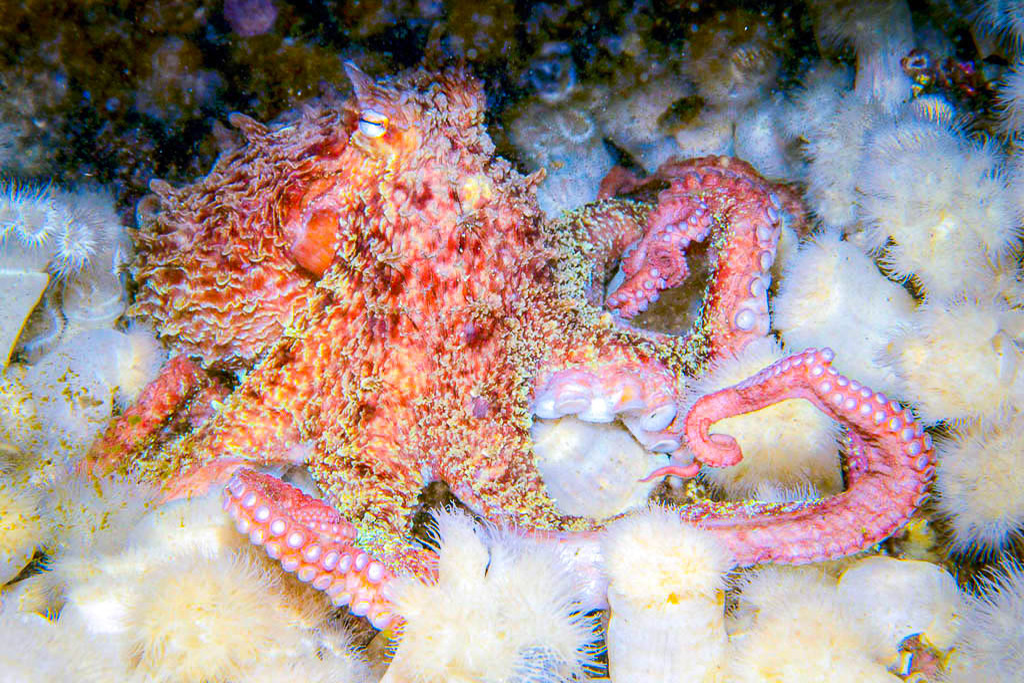News
Scubaverse Underwater Photographer Interview: Jett Britnell
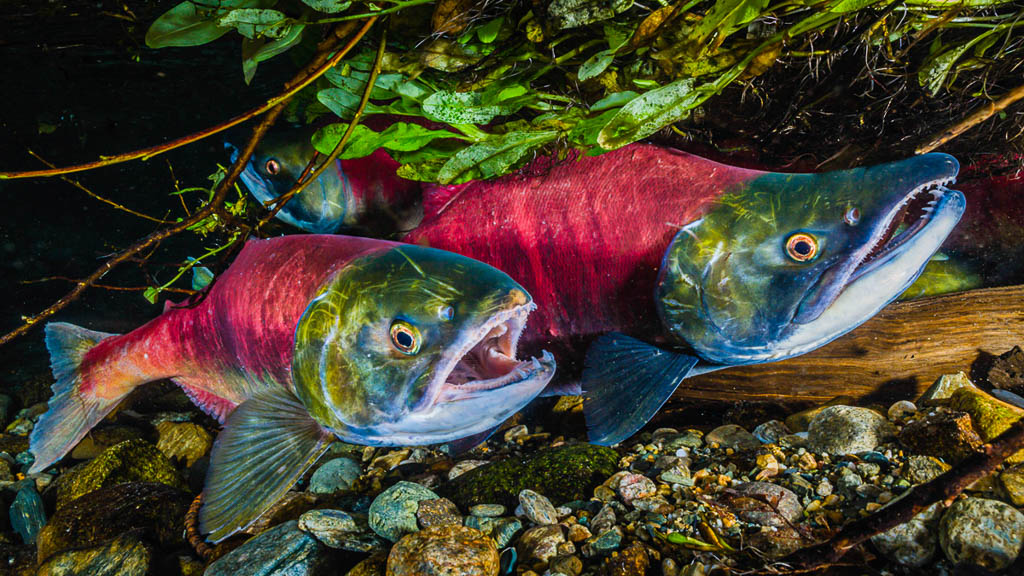
In an ongoing series, Scubaverse’s Underwater Photography Editor Nick Robertson-Brown talks to underwater photographers from around the world that he admires. In this blog: Jett Britnell
NRB: Tell us a little about yourself
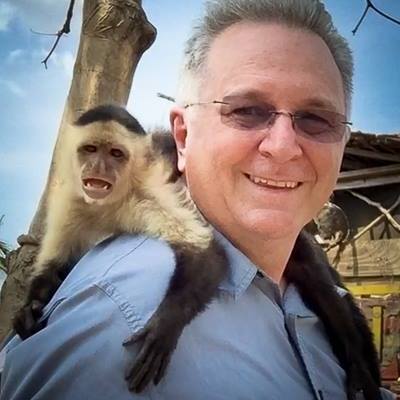 JB: I was five years old when I happened to watch an early 60s TV episode of a scuba diving adventure show called, Sea Hunt. I felt so inspired that I grabbed a war surplus gas mask that I had begged my dad to buy me at the local county fair, and ventured out into my backyard. Our backyard had a large iron cauldron that was filled with water and orange goldfish as a lawn feature. My gas mask had goggles and a long hose attached to a canister. Surely, it would work underwater. After putting on the gas mask I heaved myself up on the lip of the cauldron and dunked my head underwater. Not only could I clearly see the goldfish swimming, but I also noticed the flakes of rust lining the bottom of the caldron. Soon enough, water began seeping into the mask. “No worries”, I thought, “I have a breathing hose!” Of course, the gas mask flooded with water and I had to quickly abort my underwater mission. Clearly, something was calling to me as all through my childhood I was hypnotically drawn to scuba diving either through watching TV documentaries such as The Undersea World of Jacques Cousteau or thumbing through the pages of National Geographic to follow the shark diving exploits of Australia’s famous shark divers, Ron and Valerie Taylor.
JB: I was five years old when I happened to watch an early 60s TV episode of a scuba diving adventure show called, Sea Hunt. I felt so inspired that I grabbed a war surplus gas mask that I had begged my dad to buy me at the local county fair, and ventured out into my backyard. Our backyard had a large iron cauldron that was filled with water and orange goldfish as a lawn feature. My gas mask had goggles and a long hose attached to a canister. Surely, it would work underwater. After putting on the gas mask I heaved myself up on the lip of the cauldron and dunked my head underwater. Not only could I clearly see the goldfish swimming, but I also noticed the flakes of rust lining the bottom of the caldron. Soon enough, water began seeping into the mask. “No worries”, I thought, “I have a breathing hose!” Of course, the gas mask flooded with water and I had to quickly abort my underwater mission. Clearly, something was calling to me as all through my childhood I was hypnotically drawn to scuba diving either through watching TV documentaries such as The Undersea World of Jacques Cousteau or thumbing through the pages of National Geographic to follow the shark diving exploits of Australia’s famous shark divers, Ron and Valerie Taylor.
As a professional scuba diving photojournalist based in Vancouver, Canada, I have achieved what is known in explorer circles as being the “Holy Trifecta!” as I’m a Fellow in three of the world’s most prestigious explorer societies, The Explorers Club (New York), the Royal Canadian Geographical Society (Ottawa) and the Royal Geographical Society (London). I’m also a member of the Ocean Artists Society, an Ambassador in EXPLOCEAN’s League of Underwater Explorers, and a consultant to Elephanatics, an elephant advocacy organization based in Vancouver, British Columbia, Canada.
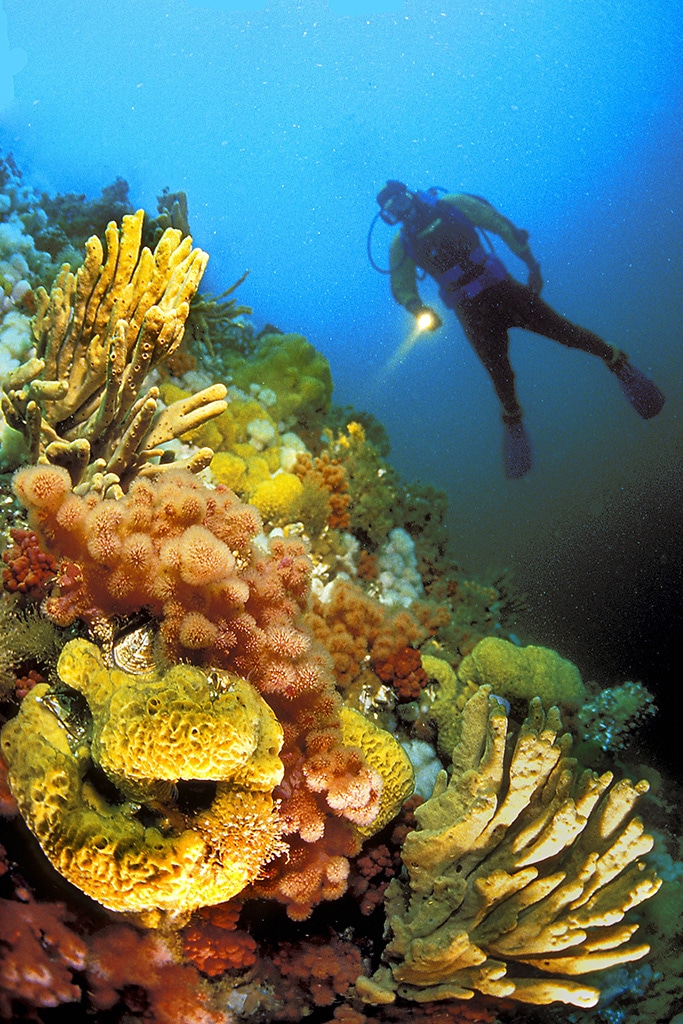
Descent into Browning Passage – British Columbia – at a dive site called Seven Tree Island – Jett Britnell
The first story I ever wrote was on speculation for Canada’s DIVER Magazine which meant if my writing and photography were not up to snuff, they did not have to publish it. Remarkably, for someone without a writing degree, or any formal photography training, my first published story in August 1987 was a four-page centre spread feature article along with one of my photos gracing the magazine’s front cover. I had arrived, so to speak. Since then, I have amassed almost 60 magazine cover shots, and my images and editorial continue to be published internationally in various media. Apart from freelancing with various scuba publications through the years, I was also a Travel Editor for Dive News Network, and a Contributing Editor to Canada’s Diver Magazine for 12 years. In 2016, I was named one of “122 Inspiring Shooters You Should Know” by Scuba Diver Ocean Planet Magazine. My wife, Kathryn, and I also co-author an exploration, photography and travel column for Luxe Beat Magazine under the banner “Third Age Expeditions,” https://luxebeatmag.com/category/columns/third-age-expeditions
NRB: How did your underwater photography start?
JB: My pursuit of underwater photography arose back in the early 80’s when I saw a couple of magazine cover shots in Canada’s DIVER Magazine by local British Columbia underwater photographer Gordy Cox. He remains as being one of the most talented underwater photographers I have ever known. I started shooting with slide film and actually learned how to adjust camera f-stops and shutter speeds 60-feet beneath the sea. While my undersea images were good, and getting better, to get them published in a magazine, I had to write the story to go along with my photos. Writing for magazines I also learned as I went along.
I made my first underwater pictures in January 1983 using a Canon AE-1 35mm SLR camera in a Tussey underwater housing. Those early images would not see the light of day today. Around this time, I had met Gordy Cox and we became friends. From the beginning Gordy always told me that I had “a good eye” and not to worry as the lighting will come. I also consider myself fortunate that I also become friends with a couple other talented BC underwater photographers, Neil McDaniel and David Fleetham. Somewhere along the way I was simply accepted as being one of their peers. Sadly, my friend and mentor, Gordy Cox, passed away in 2020.
NRB: What is your favourite u/w camera equipment (past & present) & why?
JB: While I have tried other camera brands underwater, I have largely been Team Nikon since I was first published. Prior to digital photography, I started out shooting slide film and my favorite camera was a Nikon F3 with a sport viewfinder in an underwater housing. I had two of these cameras housed in Aquatica housings, one set up for macro and the other for wide angle. I switched to digital photography in May 2004 with a Nikon D70 which was a great little 6MP DSLR and have not exposed one roll of film since. Presently, I’ve transitioned from a Nikon D800 to using Nikon Z6 and Z7 mirrorless cameras housed in an Aquatica AZ6/7 underwater housing, with twin Sea & Sea YS-D3 strobes. While I own a variety of prime Nikon lenses, the workhorse lenses for my underwater work are the AF Fisheye-NIKKOR 16mm f/2.8 for wide-angle work and the AF Micro-NIKKOR 60mm f/2.8 and Micro-NIKKOR 105mm f/2.8 lenses for shooting fish and macro critters. These three lenses pretty much cover it all underwater. I have also started using a Nikkor Z 14-24mm f/2.8 which I am quite enjoying.
NRB: What would be your advice to anyone new to underwater photography?
JB: Lighting in underwater photography is everything. Study the work of other underwater photographers to gain inspiration and perspective. Try to figure how those underwater photographers used light, the subject matter and composition. Experiment at trying to emulate their style. Never feel you must purchase the most expensive photography equipment. Buy the best you can afford, but never forget that it is the photographer, and not the equipment, that makes the photo. Shoot a lot of images and include both horizontals and verticals. Studying marine life behavior and their habits is vitally important if you wish successfully photograph marine subjects. The goal is to keep working at it and never stop learning. Consider doing photo dives in places where nobody else goes. It is in these places where new discoveries are made. Participate in dedicated underwater photography expeditions. Be sure to friend or follow underwater photo pros and scuba diving editors in social media to keep abreast of what’s happening. Lastly, never worry. The lighting will come as it did for me.
NRB: What, or who, has been the single biggest inspiration for your underwater photography?
JB: Apart from the local BC underwater photographers who I dived with regularly, there were also several world-renowned underwater photographers whose work always inspired me. For me, teamwork makes the dream work. I have always been drawn to and admired the photos made by diving couples such as Hans & Lotte Hass, Ron & Valerie Taylor, and Stephen Frink and his dearly departed wife, Barbara Doernbach. Other underwater photo pros whose imagery consistently provided stars to reach for were Amos Nachoum, Chris Newbert, David Doubilet, Howard Hall, Marty Snyderman, and the late Rick Frehsee. They all shot with slide film back in the early days where you only had 36 frames per dive. And then there is what I like to call the new wave of underwater photo pros, the incomparable Ellen Cuylaerts, Michele Westmoreland, Allison Vitsky, Alex Mustard, Ken Kiefer, Eiko Jones, Stewart Sy, Joanna Suan and my brother from another mother and Tobermory’s shipwreck diving legend Stuart Seldon. I would also be remiss if I did not mention Michael Maes who, before turning to the dark side of shooting underwater video, created some stunning underwater still images.
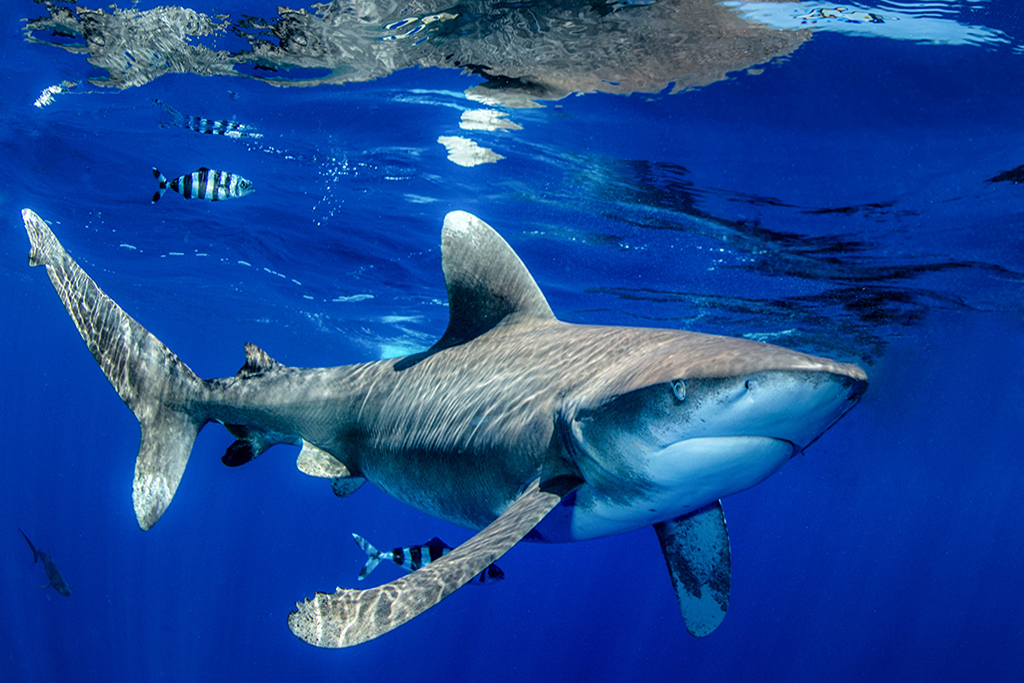
Oceanic whitetip sharks grow up to 4 meters and are “Critically Endangered” in the Northwest and Western Central Atlantic areas – Cat Island – Bahamas – Jett Britnell
NRB: What image are you most proud of and why?
JB: I never fall in love with the images I make. Not unlike searching for the lost chord in music, I’m seemingly always more interested in the next photo I’ve yet to make. That being said, if I had to choose just one photo at the moment it would be an image, I made of an Oceanic Whitetip Shark while snorkeling with Epic Diving (www.epicdiving.com) approximately seven miles offshore at Cat Island, in the Bahamas. It’s an image I held in my mind’s eye after watching the shark documentary “Blue Water, White Death” when I was still a pre-teen.
NRB: Where is your favourite dive location, and is it your favourite for the photography?
JB: I absolutely love diving just about anywhere on this magnificent blue planet. If you were to ask, “If you could only dive in one place for the rest of your life, where would that be?” it would hands down be in British Columbia’s famed Browning Passage, which is situated off the north end of Vancouver Island. I’ve made it known this is where I want my cremated remains scattered after my soul departs on its next great adventure.
NRB: What are you views on marine life manipulation, moving subjects?
JB: I‘m opposed to marine life manipulation insofar as moving say a nudibranch next to some more colourfully background, or anything like that. Some believe that shark dives where bait is used to attract them into the area is manipulating the shark’s behaviour. I disagree as there have been several studies which support that sharks are merely being opportunistic feeders. I have witnessed underwater photographers move something, and then not put it back. No picture is worth harming or disturbing marine life.
NRB: What do you look for when you are making your images?
JB: First, if I’m shooting wide angle, I always use “jump settings.” In other words, my camera settings are already dialed in for any subject I might encounter after splashing beneath the waves. Down below, I think about composition and photogenic backgrounds. I take my time to look for photo ops. Patience is a virtue as I will wait a considerable amount of time for a critter to move into the right place. Ideally, we are at a dive site inhabited by marine life we are hoping to photograph. If not, it doesn’t matter. I always descend beneath the waves with a mindset that something good will always happen. Some underwater photographers stress themselves out, along with whomever they may be diving with. In order to truly excel at the art of underwater photography on should attach themselves to having a Zen-like attitude as easily as they change a camera lens.
NRB: What motivates you to take u/w photos?
JB: I never needed any motivation. I could not have known when I was five years old what I know now and that is I was shaping my destiny when I strapped on an old war surplus gas mask and dunked my head into a big black iron cauldron to look at goldfish. I have a lifelong love for the oceans, rivers and lakes and all that lurks beneath the surface.
NRB: If you could photograph any one thing/place what or where would that be?
JB: There is no one place for me. I would love to photograph marine life in the Arctic and Antarctica, Orcas in Norway, or diving with sharks and whales just about anywhere; exploring ancient shipwrecks in the Greek Isles, and the Philippines presently looms large on our horizon. We have been there twice before and Kathryn and I have been invited to lead a trip there in 2022. It’s a lovely country brimming with kind-hearted, beautiful, people and diving there never ceases to amaze.
To see more of Jett’s work follow these links:
- Website: www.jettbritnell.com
- Website: thirdageexpeditions.com
- Facebook: https://www.facebook.com/jett.britnell
- Instagram: https://www.instagram.com/jett_britnell
- Twitter: https://twitter.com/jettbritnell
Gear News
Introducing the TR-80, IR-50 and CS-30 Regulators from DYNAMICNORD

Whether you are a beginner or a professional diver – with the three new main regulators from DYNAMICNORD, everyone will find their favourite regulator. They all look super stylish.
Excellent performance with the TR-80
Quality and performance are the be-all and end-all for regulators. It is not for nothing that the TR stands for Tec Reg. The innovative design of the TR-80 guarantees absolute reliability – even in ice-cold waters.

Perfect breathing effort at 0.8 J/l / certified for diving in waters below 10 degrees / structural design made of solid brass for best cold protection / membrane-compensated design with dry seal of the first stage / reduced exhalation effort thanks to optimized exhalation membrane and bubble deflector / adjustable Venturi (dive/predive) and adjustment knob for individual inhalation comfort / innovative design of the front cover prevents free-flow in strong currents or when diving with scooters / design made of sandblasted brass, matt chrome finish / 2 HP and 4 LP outlets / mouthpiece made of high-quality, anti-allergic silicone for maximum comfort.


Amazing underwater adventures with the IR-50
The IR-50 is the top regulator for advanced and experienced divers. Natural breathing is the essence of this regulator.

Ideal breathing effort at 0.8 J/l /certified for diving in waters below 10 degrees / compensated membrane / adjustable venturi (dive/predive) and adjustment knob for individual inhalation comfort/ outlet valve and deflector for minimum exhalation effort and reduction of bubbles on the face / design made of sandblasted brass, matt chrome finish / 2 HP and 4 NP outlets / mouthpiece made of high-quality, anti-allergic silicone for maximum comfort.


The Workhorse – our CS-30
For diving centres and diving beginners – the workhorse stands for strong construction, reliability and robustness. Perfect for your training.

Optimal breathing effort at 0.8 J/l /recommended for diving in waters above 10 degrees / non-compensated piston / adjustable venturi (dive/predive) / outlet valve and deflector for minimum exhalation effort and reduction of bubbles on the face / design made of sandblasted brass, matt chrome finish / 1 HP and 3 NP outlets / mouthpiece made of high-quality, anti-allergic silicone for maximum comfort.


Octopus OP-30
The OP-30 is the ideal addition to all DYNAMICNORD regulators. It is identical in construction to the CS-30.

The TR-80, IR-50, CS-30 (DIN & INT) regulators and the Octopus OP-30 are available from DYNAMICNORD dealers and in the online store.
DYNAMICNORD – Your Outdoor Companion.
Marine Life & Conservation
Paul Watson Released as Denmark Blocks Japan’s Extradition Bid

Renowned anti-whaling activist Paul Watson has been released from custody in Greenland after spending five months in detention. Denmark’s Justice Ministry rejected Japan’s request for his extradition, citing insufficient guarantees that his time already served in custody would be credited against any potential sentence.
The 74-year-old Canadian-American was arrested on July 21 in Nuuk, Greenland’s capital, when his ship docked to refuel. His arrest was based on a 2012 Japanese warrant related to a 2010 encounter in Antarctic waters. Japan alleged Watson obstructed operations and caused damage to a whaling research ship during efforts to disrupt illegal whaling. Watson has consistently denied these claims, maintaining his commitment to marine conservation.
Denmark, which oversees extradition matters for Greenland, concluded that while the legal conditions for extradition were met, the lack of assurances from Japan regarding time-served credit made extradition untenable.
In a video shared by his foundation, Watson expressed gratitude and relief, saying, “After five months, it’s good to be out… and good to know they’re not sending me to Japan.” He added that the most difficult part of his time in custody was being separated from his two young sons.
Watson is a pioneering figure in marine conservation, known for founding the Captain Paul Watson Foundation in 2022 after decades of activism with the Sea Shepherd Conservation Society. His bold efforts to defend marine life have earned him widespread support, including from celebrities and conservationists. His work has also been featured in the acclaimed reality TV series Whale Wars.
Watson’s lawyer, Jonas Christoffersen, praised the decision, stating, “We are happy and relieved that Paul Watson is now free.” He added that Watson is eager to reunite with his family and continue his vital work.
The arrest occurred while Watson’s vessel, the M/Y John Paul DeJoria, was en route to the North Pacific with a team of 26 volunteers to intercept a Japanese whaling ship. His foundation described the arrest as politically motivated and emphasized that Watson’s actions were focused on ending illegal whaling practices.
Japan resumed commercial whaling in 2019 after leaving the International Whaling Commission, asserting that whale meat is a cultural tradition. Conservationists, however, continue to challenge these practices, highlighting their impact on marine ecosystems.
Despite the challenges, Watson remains steadfast in his mission to protect marine life and bring attention to whaling practices. His dedication to ocean conservation has made him a globally respected advocate for the environment.
-

 News2 months ago
News2 months agoIconic SS United States to become the World’s Largest Artificial Reef
-

 News3 months ago
News3 months agoBook Review – 52 Assignments: Underwater Photography
-

 Gear News3 months ago
Gear News3 months agoDYNAMICNORD – New German diving brand enters the British market
-

 News3 months ago
News3 months agoExploring Cenote El Pit: A Diver’s Dream
-

 Gear News3 months ago
Gear News3 months agoTry BARE drysuits (and maybe even win one!) this Friday with Sea & Sea at North West Dive Fest
-

 Marine Life & Conservation3 months ago
Marine Life & Conservation3 months agoBook Review: Coral Triangle Cameos
-

 Blogs2 months ago
Blogs2 months agoDive the Egyptian Red Sea this Autumn with Regaldive
-

 News3 months ago
News3 months ago2024 Ocean Art Underwater Photo Competition Announced


